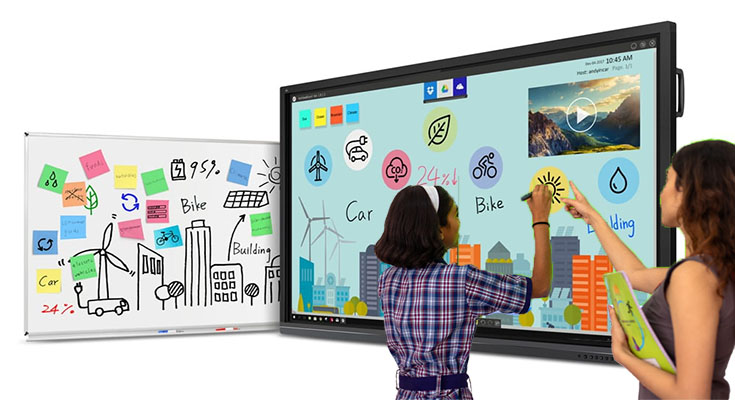In recent years, interactive screens have increasingly revolutionized the classroom experience. By providing an interactive learning environment, these screens allow teachers and students alike to engage better with educational content and collaborate more closely than ever before. Read on for more information about how this technology is transforming classrooms worldwide!
1. Support Active Learning
Interactive screens provide an interactive environment for learning, allowing students to engage with educational content rather than passively receive it actively. By providing tools such as virtual whiteboards, touch-screen capabilities, and online collaboration tools, teachers can create dynamic learning experiences that keep students engaged.
Interactive screens can also reduce the time teachers need to spend on lecturing and allow them more time for student-led activities. This helps foster a more collaborative learning environment where students are encouraged to think critically, ask questions and develop their problem-solving skills.
2. Enhance Creativity
Students of all ages are often more creative when working with their peers. Interactive screens allow students to brainstorm and collaborate on projects in real-time, helping them develop collaboration skills and boosting creativity.
You can find interactive screens with various creative tools, from image and video editing software to animation programs. GoEducation, for example, offers interactive screens with a library of interactive activities for students. You can also find interactive screens with software enabling students to design educational games and activities.
3. Encourage Student Participation
Interactive screens can also encourage student participation in the classroom. By providing an engaging and visual way to present information and ideas, these screens can capture and keep students’ attention while they explore the material. They also make it easier for students to share their ideas and opinions with the class.
In addition, interactive screens can also help teachers understand how engaged their students are in the material. Teachers can quickly gauge student understanding by providing feedback tools and surveys on the screen without relying on traditional methods such as paper-based tests or oral quizzes.
4. Feedback Delivery
Interactive screens also offer an excellent way for teachers to provide timely student feedback. Teachers can encourage and support student learning more effectively by providing real-time feedback.
In addition, interactive screens can store and access data quickly. This makes it easy for teachers to track student progress over time and ensure they provide the best support possible. GoEducation provides teachers with a library of data-driven assessments to track student performance. The software also provides teachers with an easy-to-use dashboard for tracking and analyzing student performance.
5. Better Classroom Management
If you are an educator, you know how important it is to create a safe and inviting classroom environment. Interactive screens can help with classroom management by providing a visual way for teachers to monitor student progress and ensure that students are engaged and on-task.
Interactive screens can also help teachers set expectations for their students more clearly. Interactive screens help foster a culture of respect and responsibility by providing visuals of classroom guidelines and activities.
Overall, interactive screens can be a great tool for enhancing the educational experience. These screens help teachers create dynamic and meaningful learning experiences that keep students engaged by providing engaging visuals, fostering collaboration, and encouraging student participation.




